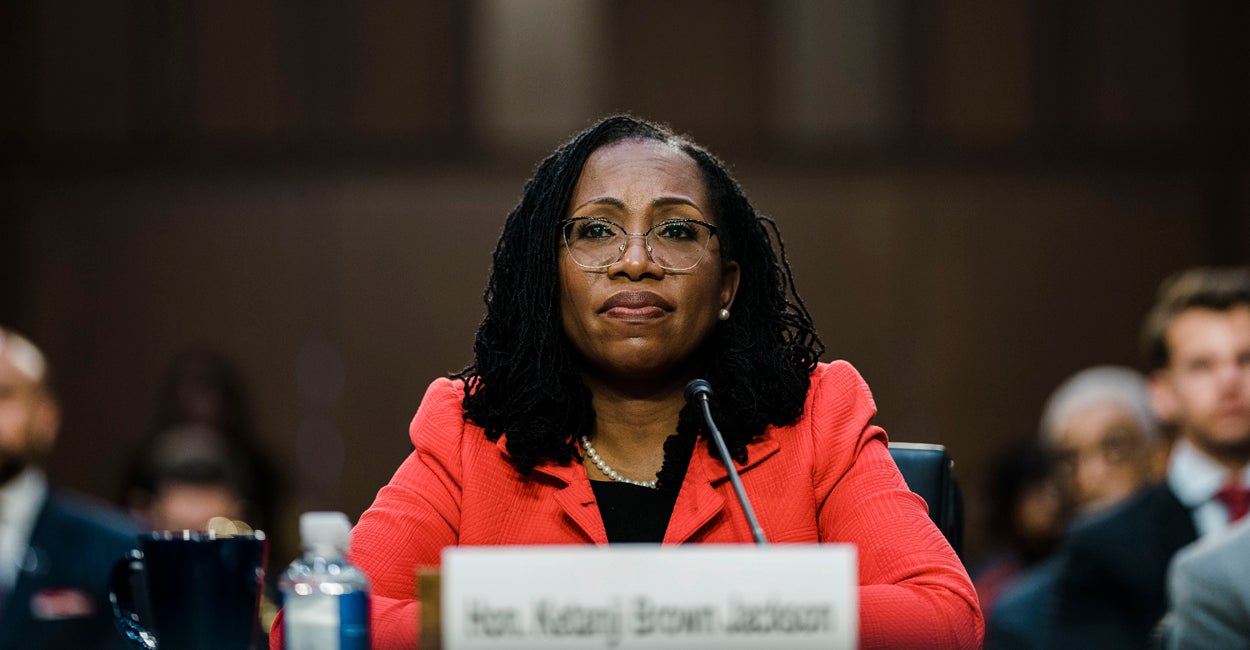Judge Ketanji Brown Jackson’s sentencing pattern in child pornography cases was one of the big issues raised in last week’s multiday confirmation hearing before the Senate Judiciary Committee. Clarity on this issue is needed before the committee, and then the full Senate, make their decision regarding Jackson’s nomination to the Supreme Court.
Federal law distinguishes among three types of child pornography cases: production, possession, and distribution. During the hearing, Democrats repeatedly offered two different standards for evaluating Jackson’s sentences for these crimes as a judge on the U.S. District Court for the District of Columbia.
First, Democrats said we should compare Jackson’s sentences to those of U.S. District Court judges nationally. The risk, of course, is that this might expose a broader failure of federal judges to grasp the unique devastation that child pornography wreaks on victims.
The Daily Signal depends on the support of readers like you. Donate now
But let’s do what Democrats said and compare both the length of Jackson’s sentences and their relation to the range recommended by the U.S. Sentencing Commission’s guidelines with the national average. By either measure, based on the Sentencing Commission’s most recent data, Jackson’s sentences were significantly more lenient than other federal judges for all three categories of child pornography crimes.
Her sentences were 35% below the national average for production of child porn, 57% below the average for possession, and 47% below the average for distribution.
Jackson also sentenced below what the guidelines recommended in every case in every category. She did so 48% more often than the national average for production of child porn, 51% for possession, and 36% for distribution.
Second, Democrats suggested that Jackson’s sentencing record in child pornography cases mirrored that of judges appointed by President Donald Trump.
When questioning of the nominee opened March 22, however, Judiciary Chairman Richard Durbin, D-Ill., could come up with only a single case by a single Trump-appointed judge. Durbin returned to the topic that afternoon, but used the same lone example of a Trump-appointed judge imposing a sentence for possession of child porn that was below the sentencing guidelines’ recommendation.
Including what Durbin left out paints quite a different picture. Many of Trump’s appointees to the U.S. Court of Appeals had, like Jackson, previously served on the District Court. In stark contrast to Jackson, 45% of their sentences for child pornography were within or above the range recommended by the guidelines. Oops.
So one thing that we know is that, using either standard demanded by Judiciary Committee Democrats, Jackson’s sentences in all three categories of child pornography crimes were significantly more lenient than those of other federal judges. In fact, in more than half of her cases of child pornography distribution, Jackson didn’t add a single day to the mandatory minimum sentence already imposed by Congress.
The other thing we know is that Jackson’s record regarding child porn is longer than her sentences in these cases. For example, while Jackson was serving as vice chairman of the Sentencing Commission, the panel issued a report criticizing the federal guidelines as “outdated.” She also has speculated that many child pornography criminals are more interested in technology than in children.
Such a blindspot is especially disturbing since all categories of child pornography crimes inflict ongoing, often life-long, harm on children. The Sentencing Commission’s reports explain that these crimes are growing “substantially both in total numbers and as a percentage of total [court] caseload.”
Citing myriad studies and Senate reports, the Supreme Court stated in the 1982 case of New York v. Ferber: “Sexually exploited children are unable to develop healthy affectionate relationships in later life, have sexual dysfunctions, and have a tendency to become sexual abusers as adults.”
The high court continued:
Pornography poses an even greater threat to the child victim than does sexual abuse or prostitution. Because the child’s actions are reduced to a recording, the pornography may haunt him in future years, long after the original misdeed took place. A child who has posed for a camera must go through life knowing that the recording is circulating within the mass distribution system for child pornography.
And in Paroline v. United States (2014), the Supreme Court acknowledged that “the full extent of this victim’s suffering is hard to grasp.” Ongoing distribution of the images of her rape, the court said, “meant the wrongs inflicted upon her were in effect repeated.”
As she put it in a victim impact statement: “Every day of my life I live in constant fear.” This resulted in depression, drug abuse, the inability to care for herself, and the need for long-term therapy.
As America’s Founders designed it, the Senate’s role in the judicial appointment process is to prevent appointment of “unfit characters” by identifying “special and strong reasons” why a nominee should not be appointed.
Every senator must determine whether, based on this and other issues, those reasons apply regarding Jackson’s nomination to replace Justice Stephen Breyer. Doing so requires accurate and complete information rather than spin and distraction.
When it comes to child pornography crimes, Jackson’s record includes downplaying the seriousness of such cases, followed by a consistent pattern of lenient sentences.
This commentary originally appeared in National Review.
Have an opinion about this article? To sound off, please email letters@DailySignal.com and we’ll consider publishing your edited remarks in our regular “We Hear You” feature. Remember to include the url or headline of the article plus your name and town and/or state.





























